Mingjun Guan
Tactile Sensing with a Tendon-Driven Soft Robotic Finger
Jul 06, 2021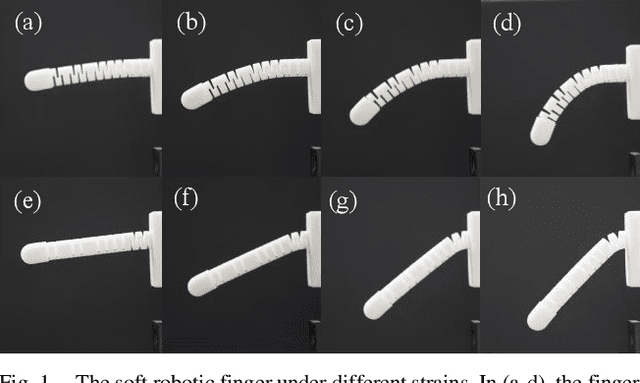
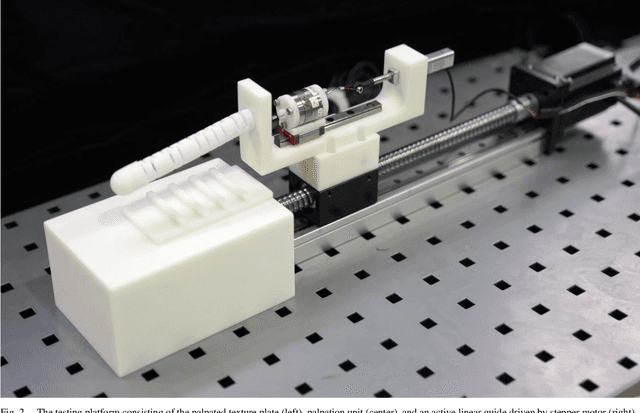
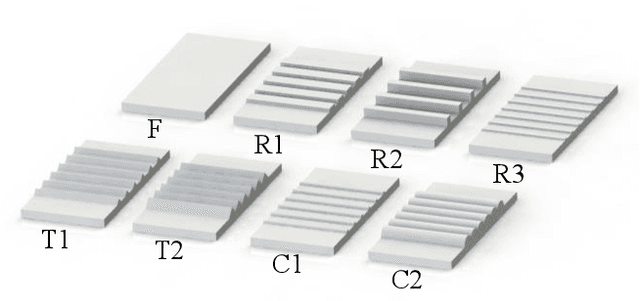
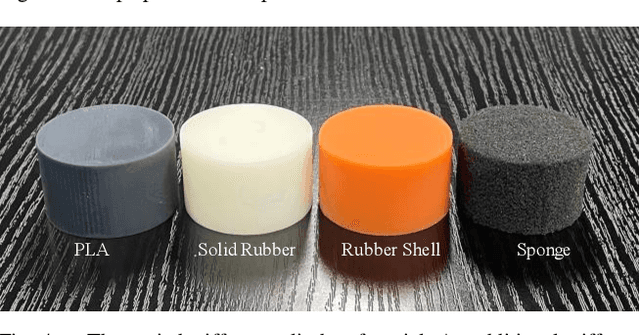
Abstract:In this paper, a novel tactile sensing mechanism for soft robotic fingers is proposed. Inspired by the proprioception mechanism found in mammals, the proposed approach infers tactile information from a strain sensor attached on the finger's tendon. We perform experiments to test the tactile sensing capabilities of the proposed structures, and our results indicate this method is capable of palpating texture and stiffness in both abduction and flexion contact. Under systematic cross validation, the proposed system achieved 100% and 99.7% accuracy in texture and stiffness discrimination respectively, which validate the viability of this approach. Furthermore, we use statistics tools to determine the significance of various features extracted for classification.
Improving Grasp Planning Efficiency with Human Grasp Tendencies*
Jun 27, 2021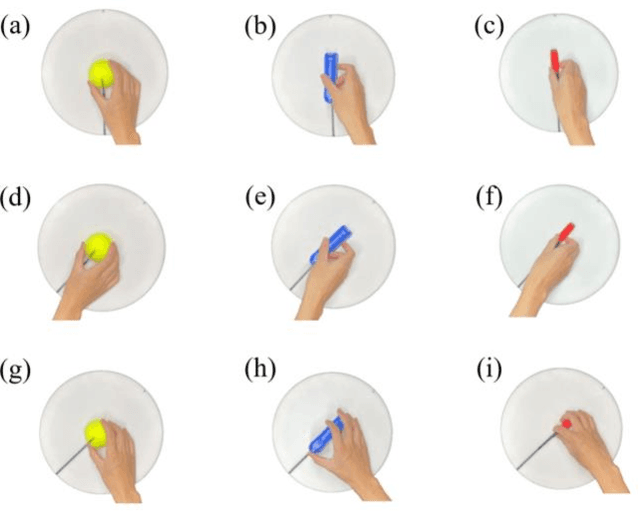
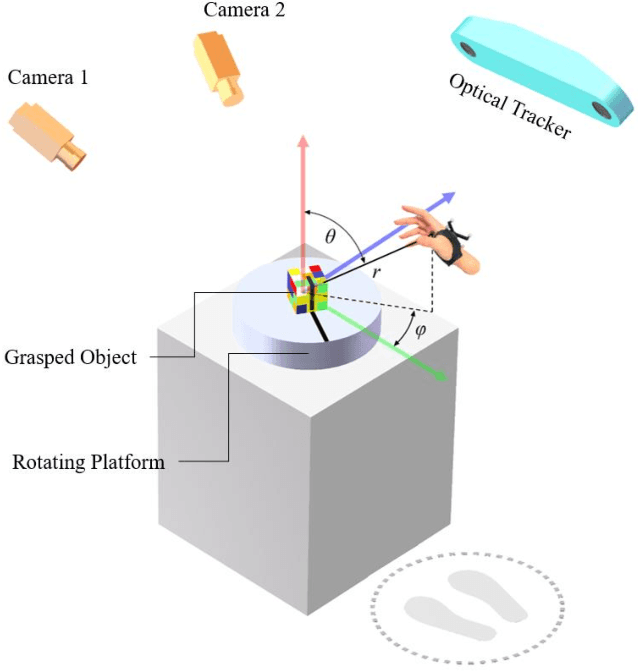
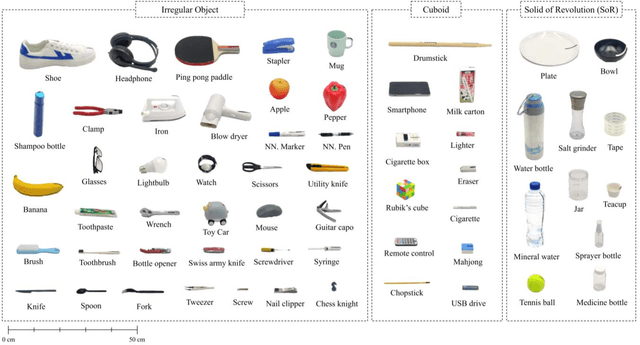
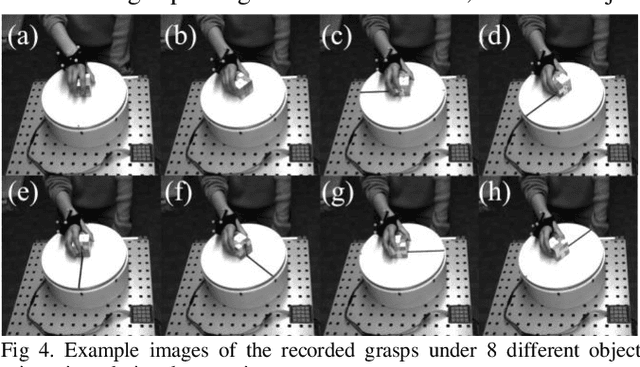
Abstract:After a grasp has been planned, if the object orientation changes, the initial grasp may but not always have to be modified to accommodate the orientation change. For example, rotation of a cylinder by any amount around its centerline does not change its geometric shape relative to the grasper. Objects that can be approximated to solids of revolution or contain other geometric symmetries are prevalent in everyday life, and this information can be employed to improve the efficiency of existing grasp planning models. This paper experimentally investigates change in human-planned grasps under varied object orientations. With 13,440 recorded human grasps, our results indicate that during pick-and-place task of ordinary objects, stable grasps can be achieved with a small subset of grasp types, and the wrist-related parameters follow normal distribution. Furthermore, we show this knowledge can allow faster convergence of grasp planning algorithm.
 Add to Chrome
Add to Chrome Add to Firefox
Add to Firefox Add to Edge
Add to Edge